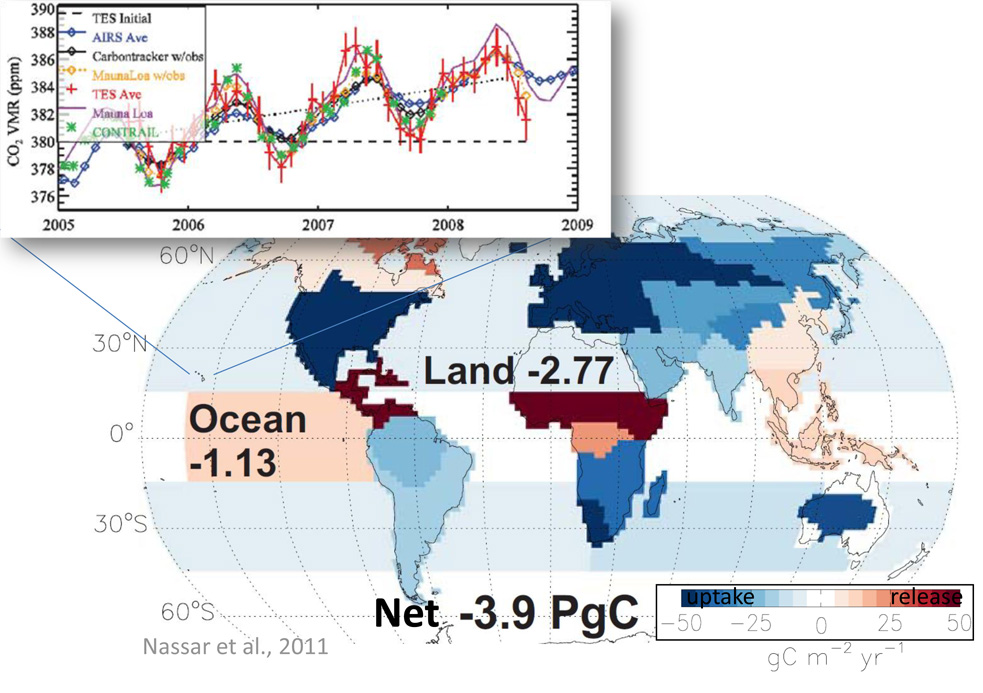
For the first time, combined satellite and surface CO2 data are used to estimate global CO2 sources and sinks. The results indicate a net land sink that is overall consistent with previous results and suggest that the tropical forests in South America could have been a weak sink in 2006. The net uptake of CO2 by the ocean and biospheric land of -3.9 PgC offsets the fossil fuel CO2 emissions and mitigates the atmospheric CO2 increase. (Nassar et al., ACPD 2011) In the upper left, a 3-year time series of TES data (red) is compared to Mauna Loa (purple) as well as model and aircraft coincident data. TES shows the seasonal cycle and yearly increase even though the initial guess and prior are set to a flat 380 ppm. *
This comparison of TES mid-tropospheric methane with Asian surface site shows similar long term trends due to changes in methane emissions. Differences in seasonal variability are due to convection and transport of surface emissions during the summertime Asian Monsoon. These data highlight the need for long-term measurements of free-tropospheric methane to disentangle transport effects from changes in surface emissions and chemistry.
* Reference: Nassar, R., Jones, D. B. A., Kulawik, S. S., Worden, J. R., Bowman, K. W., Andres, R. J., Suntharalingam, P., Chen, J. M., Brenninkmeijer, C. A. M., Schuck, T. J., Conway, T. J., and Worthy, D. E.: Inverse modeling of CO2 sources and sinks using satellite observations of CO2 from TES and surface flask measurements, Atmos. Chem. Phys. Discuss., 11, 4263-4311, doi:10.5194/acpd-11-4263-2011, 2011
April 2011